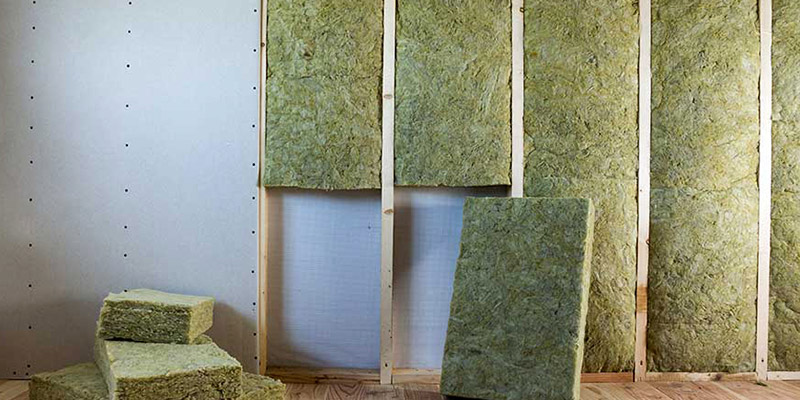
A History of Home Insulation – Traditional Insulations
Home insulation has been prominent since the 1930s and is a continually growing factor on an international level. With new technologies, companies are seeking new, efficient and sustainable ways to insulate homes. Beginning your home or commercial insulation project contains many variables and a long process from, deciding what insulation to use to what areas of your property needs insulation. Insulating your property is a long-term investment that requires well thought out knowledge in the field. For instance, if you rush the decision you may end up with an insulation you regret, that doesn’t do the job correctly. If you dwell on finding the right insulation for too long you may never get around to doing it, there are a constantly increasing number of insulation options, some traditional and some more advanced. Nonetheless, when it comes to insulating a property Eco Spray Foam Systems believes in providing an effortless, transparent and sustainable solution for our clients. Witness the history of home insulation, how traditional insulations have manifested and where we are today, the insulation world has grown and continues to grow for the better.
Traditional Insulation Methods – 1930s
Dating back to the 1930s – 1940s we understand that this period was the most prevalent in introducing home insulation. At the time the form of insulation was fibreglass insulation, which consists of extremely fine glass fibres and commonly used within blanket batts and rolls for ease of installation. This traditional form of insulation was a revelation at the time, it is a relatively cheap form of insulation, compared to most now, it can insulate standard open areas and it is also easy enough to use that it can be completed as a DIY project. Now for the 1930s and 40s this was an acceptable insulation for your home or property, however, as we move into newer decades, we can begin to see the transformation in the insulating industry.
Traditional Insulation Methods – 1950s
However, it was evident that fibreglass wasn’t sufficient for the everyday household, the material was irritating to skin, it didn’t insulate against air flow (therefore could not effectively reduce energy bills), internal atmospheres became uncomfortable, known to cause coughing and the insulation also trapped moisture and dust, leading to mould growth. Although fibreglass insulation has changed since the 1930s, companies sought to move away from the product.
Therefore, through the 1950s to the 1970s there was a new insulating product on the scene, cellulose. Cellulose insulation, specifically known for its strengths in insulating roofs, became the new, easy-to-use, insulation material. This insulator could be blown-in or loosely filled, it’s composition was mainly recycled materials such as denim, doesn’t use any greenhouse gases as propellants and it can reach (when blown) those small nooks and crannies. Cellulose became the go-to insulation, it was inexpensive and did a better job that traditional fibreglass.
However, cellulose also came with a lot of baggage. When loosely filled, cellulose settles up to 20%, leading to high energy bills as it wasn’t the most optimal insulator for stopping heat seeping out of homes and properties. Being a roof insulator, it didn’t maintain water too well, it would dry slowly after absorbing water, which leads to quicker deterioration and became a heavy dense insulator that didn’t really keep in heat all that well. Although cellulose has it’s problems, it was seen as a step forward than traditional fibreglass.
Traditional Insulation Methods – 1970s
Spray foam insulation took the market by storm in and around the 1970s. It was new, fast, clean and efficient. This superior form of insulation comes in two forms, open-cell and closed-cell, both with their own benefits. Spray foam insulation became a practical solution to insulate the hardest to reach areas, open-cell properties contained impressive expansion and flexibility, allowing for the foam to cover all nooks and crannies with ease. Moreover, this spray foam solution is 100% water blown, containing zero harmful gases and toxins. The closed-cell side of spray foam insulation is a dense, water impermeable insulator that doesn’t allow mould growth. Closed-cell insulation is a highly cost-effective solution, it reduces energy bills by containing heat, reducing the need for constant heating. Homes can be insulated to perfection with spray foam, attics, walls, basements, roofs and more can all be insulated using the aforementioned product.
Spray foam insulation is arguably the number one home insulation product globally, with its superior R-Value (ability to contain heat), expansionist capabilities (can expand in excess of 100x from it’s spraying state) and it even has sound-proofing properties. Today, Icynene spray foam technology dominates the home insulation market, with millions of homes across the world insulated. The product has been perfected and continues to provide cost-effective and eco-friendly insulating services to all.
A History of Insulations – Conclusion
We have witnessed a transformation of insulating products from fibreglass in the 1930s, cellulose in the 1950s and foam insulation in the 1970s, each exceeding potentials of their predecessors. However, it is important to note that the deficits that the traditional insulation products once held are no longer the case now, fibreglass and cellulose have been revived by newer technologies and are widely used as successful insulators today. Alternatively, there are many home insulation products available on the market, thermabead, fibre, Celotex, wool, PIR, masonry and more. If you are planning a home insulation, Eco Spray Foam Systems can help you, we offer a free survey of your house or property and can provide experienced insights into the best insulator for you. We have meticulously helped many homes across the United Kingdom insulate to optimum potential. You can contact us at info@sprayfoam.co.uk or check out or website for more information at Eco Spray Foam Systems.
You can also view our Checkatrade ratings and reviews here.
Note: Please not these insulators mentioned in this article are strictly traditional forms from the 1930s, nowadays they have modernised for the better.


